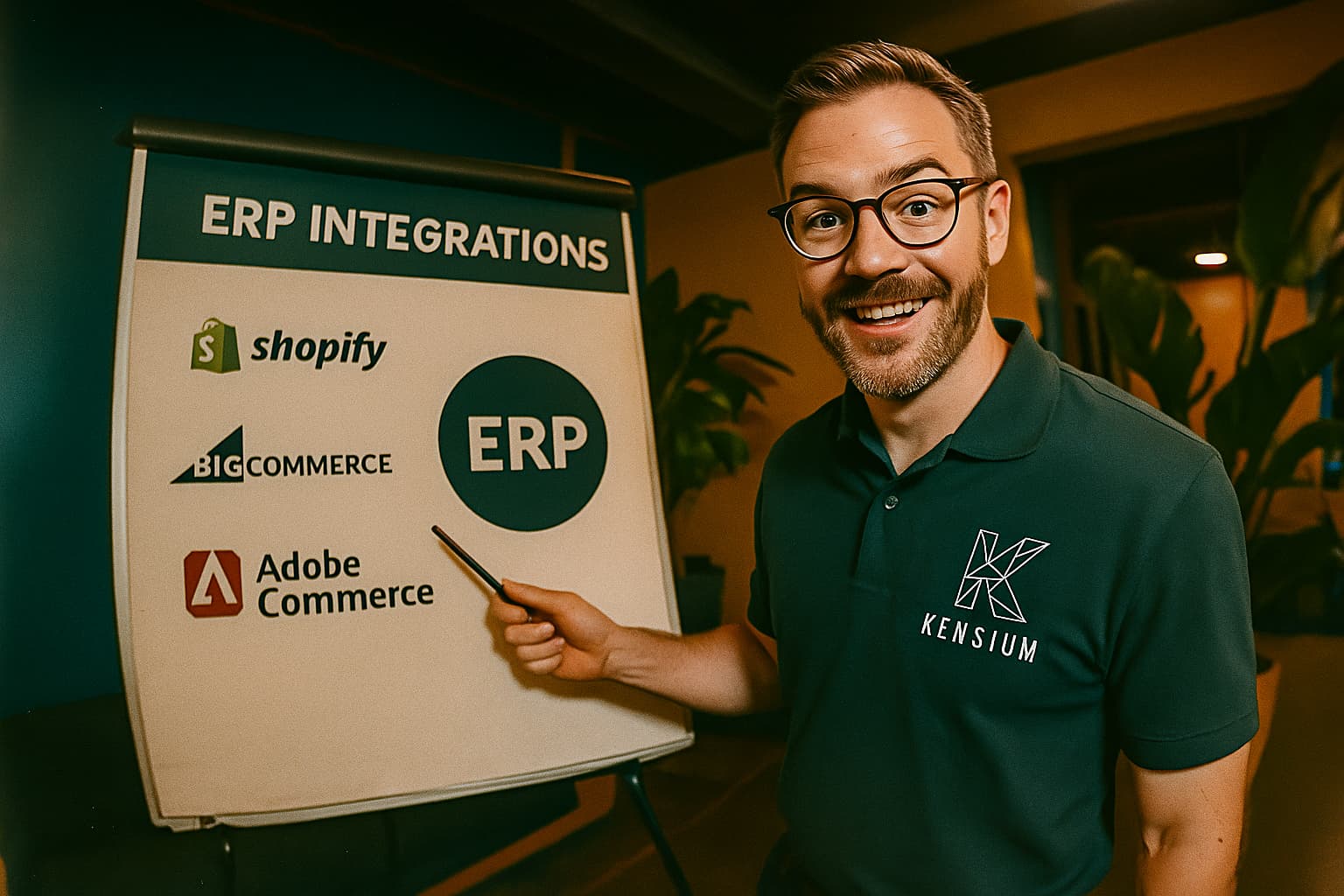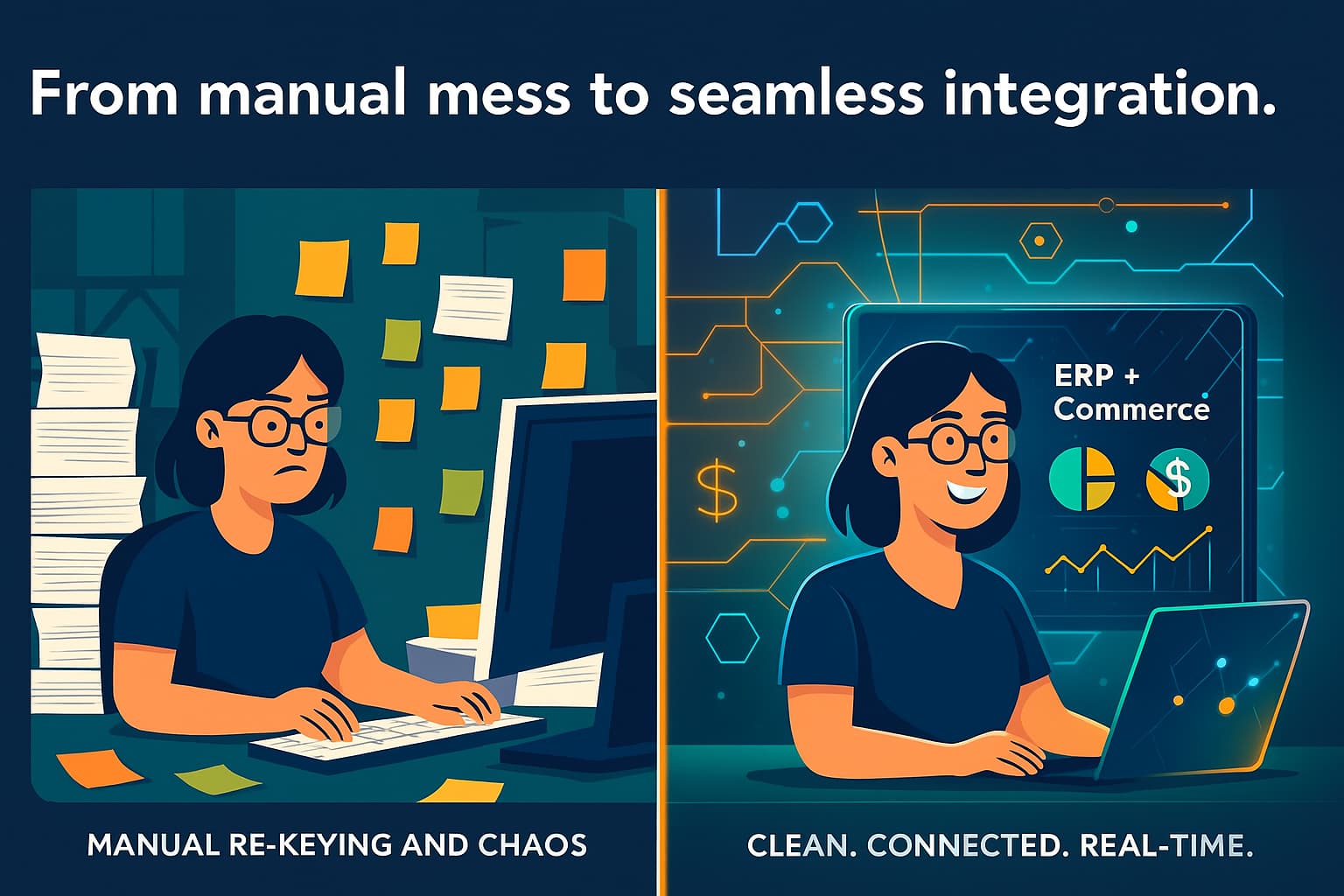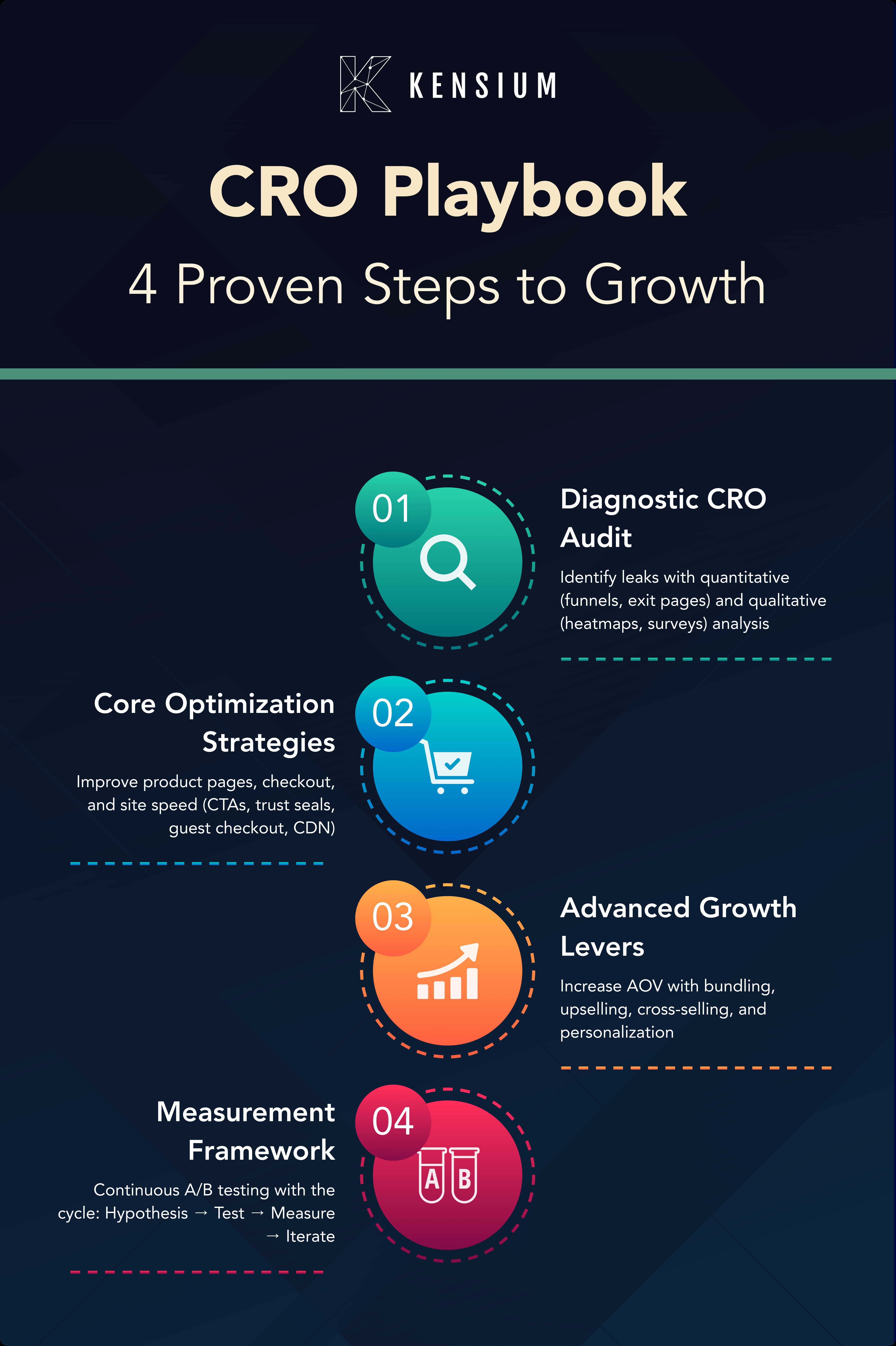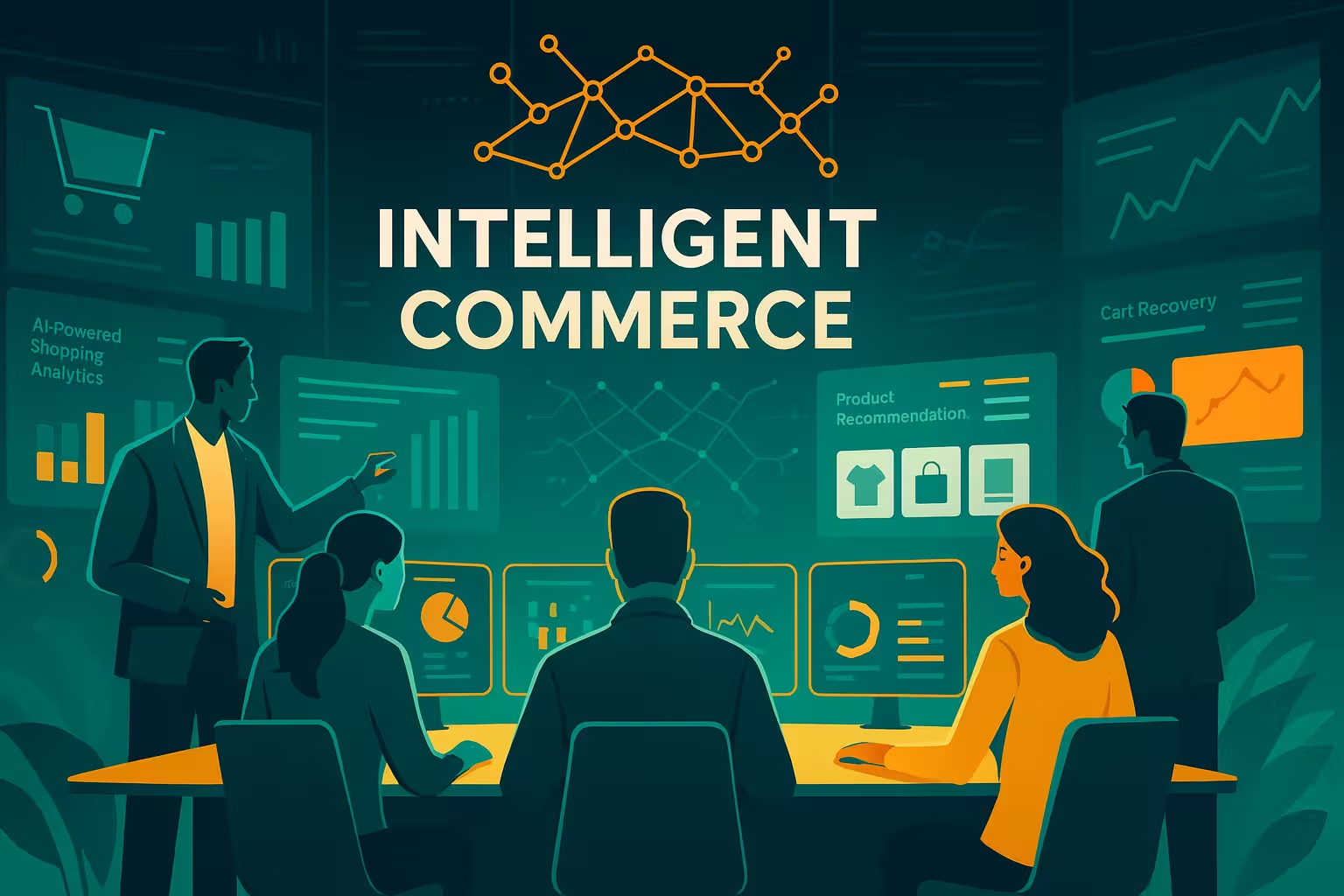
In today's rapidly growing digital landscape, ecommerce has emerged as the lifeblood of enterprises. Whether you're a global retail behemoth or a small boutique, your online presence assumes a crucial role for connecting with customers generating revenue.
However, the traditional ecommerce model, with its rigid monolithic systems, is no longer effective in meeting the ever-changing demands of contemporary consumers. Introducing Composable Commerce – an innovative approach that enables businesses to create a seamless, adaptable, and customer-focused shopping experience across multiple channels.
Within the confines of this blog post, we shall embark on a journey into the realm of Composable Commerce. During our journey, we will compare the traditional ecommerce model, elucidate its manifold benefits, and provide insights on how to embark on this transformative journey.
Composable Commerce, as defined by Gartner, utilizes Packaged Business Capabilities (PBCs) to facilitate digitally resilient commerce experiences. Application leaders must adopt a composable approach to stay prepared for the changing business landscape.
What is Composable Commerce?
Composable Commerce stands as a modern philosophy and strategic approach within the ecommerce realm. The leading market analyst, Gartner coined a common term for software architecture in June 2020. According to the report, Gartner expects that by 2023, Composable enterprises will outpace the competition by 80%. Gartner isn't the only believer to comprehend this best-of-breed commerce solution. Entrepreneurs now bet on the future of ecommerce with the advent of this component-based solution.
Composable Commerce is about reimagining the way we approach ecommerce. It provides a flexible and modular framework, breaking away from the traditional one-size-fits-all approach. In this setup, businesses have the freedom to cherry-pick the exact components they need, like content management systems, shopping carts, payment gateways, and recommendation engines. These components, often called microservices, are intentionally designed to be incredibly flexible and easily replaceable. This flexibility enables businesses to quickly adapt to changing market dynamics and evolving customer preferences, staying ahead of the curve.
Think of it like building a custom LEGO set for your ecommerce platform, where each block represents a specific function. Arrange these blocks in a way to seamlessly align with your business objectives and the customer expectations. The result? An individually tailored, nimble, and high-performance ecommerce ecosystem.
Embracing Composable Commerce over Traditional Commerce
Traditional ecommerce platforms provide a single unified solution, where you can create, setup and launch an online store. It’s the conventional and the most commonly used ‘Monolithic Architecture’. This application combines multiple components in a single, large application. The same application encompasses versatile functionality like inventory tracking, product recommendations, checkout, and store search– typically an ecommerce platform such as Shopify or Adobe Commerce.
Composable Commerce enables you to select and integrate the best-of-breed composable components built into a custom application that best suits your business needs. With the adoption of newer, better technologies based on composable architecture you are not stuck in a vendor lock-in situation, and you can transition from one vendor product or service to another. By connecting via API, it integrates with your other modules and offers valuable features for your online store. Choosing a fast, flexible and scalable platform is crucial to your ecommerce needs.
Composable Commerce Vs Headless Commerce
Headless Commerce is an ecommerce architecture that separates the front-end presentation layer (the customer-facing website or application) from the back-end ecommerce functionality (such as product management, inventory, payments, and order processing). This decoupling allows for greater flexibility and customization in delivering online shopping experiences to customers.
Some of the similarities between Headless Commerce and Composable Commerce may sound analogous, but there are significant and important differences between the two. Headless Commerce is an architectural approach used in ecommerce where the front-end is decoupled or "Headless" from the back-end ecommerce functionality.
This best-of-breed commerce architecture is built by assembling pre-built, specialized microservices or components that are tailored to specific ecommerce needs. These microservices can be mixed and matched to create a customized ecommerce ecosystem that aligns with an organization's unique business requirements and goals.
Composable CommerceHeadless Commerce

Architecture
Adopts modular approach to ecommerce, allowing businesses to select and assemble various microservices or components to build their ecommerce ecosystem.The front-end (the customer-facing website or app) is decoupled from the back end (the ecommerce platform). This separation allows for greater flexibility and customization.

Flexibility
Leverage pre-built, specialized microservices (e.g., payment processing, inventory management, recommendation engines) that can be mixed and matched to create a tailored ecommerce solution.Businesses can choose and use various front-end technologies (e.g., React, Vue.js) and connect them to the ecommerce backend via APIs.

Customization
Businesses can customize their ecommerce stack by choosing the best-in-class services for their specific needs, resulting in a more adaptable and efficient setup.Extensive customization of the user interface (UI) and user experience (UX), making it easier to create unique and tailored customer experiences.

Content Management
Like Headless Commerce, Composable Commerce often integrates with a separate CMS for content management, ensuring content can be easily changed and updated.It often involves integrating a separate content management system (CMS) to manage the website's content, which is separate from the ecommerce platform.

Scalability
Highly scalable, as businesses can add or replace microservices as they grow or as technology evolves.Highly scalable, enabling businesses to adapt quickly to changing market demands and technologies.

Speed-to-Market
It can accelerate time-to-market by leveraging pre-built microservices, reducing the need to develop everything from scratch.It can lead to faster development cycles since changes to the front-end and back-end can be made independently.
MACH Architecture
The MACH architecture is an approach to building and organizing digital technology systems, with a focus on flexibility, agility, and scalability. MACH stands for Microservices, API-first, Cloud-native Saas, and Headless. It is a framework for modernizing and structuring technology stacks, including ecommerce platforms and applications.
Making a choice between Composable Commerce and MACH
Composable Commerce is a specialized approach to structuring ecommerce technology stacks, emphasizing the selection and integration of ecommerce-specific microservices and components. MACH is a more general architectural framework that encompasses various domains, including ecommerce, and focuses on principles like microservices, APIs, cloud-native design, and headless architecture. It can be seen as a subset of the MACH architectural approach but with a more specific focus on ecommerce needs.
Why Composable Commerce is the key to increasing your ROI?
Embracing Composable Commerce brings a lot of advantages that can greatly boost your return on investment (ROI). Consider these compelling reasons to adopt this approach.
Embracing Composable Commerce for omnichannel success
Omnichannel retailing combines sales channels, including physical stores, online platforms, social media, and mobile applications for a cohesive brand experience. Composable Commerce is a great fit for omnichannel strategies due to its inherent flexibility and modular approach:
- Streamlined Customer Insights: It enables businesses to consolidate customer data, creating a cohesive view of customer behaviors and preferences across all engagement channels.
- Tailored Customer Experiences: Through a deep understanding of customer data, businesses can provide personalized experiences and recommendations across various platforms.
- Efficient Inventory and Order Management: By utilizing centralized inventory and order management systems, It enables real-time inventory visibility, and speeds up order processing, regardless of the chosen purchasing channel.
- Brand Harmonization: Achieving consistent branding and messaging across all channels is easier with direct control over each component.
- Responsive to Change: As new channels emerge or existing ones grow, it delivers the flexibility to swiftly integrate them into your existing ecosystem.
Getting Started with Composable Commerce
Embarking on Composable Commerce necessitates strategic planning and meticulous execution. Allow me to walk you through the essential steps:
- Preparing the Team for Implementation: Before exploring this modular digital commerce approach, it's important to familiarize your team with the concept and its potential benefits. Organize informative training sessions and workshops to align your team's understanding and goals with this innovative approach.
- Defining Your Business Objectives: Start by pinpointing your precise business objectives and how this best-in-class component-based ecommerce solution can be your ally in achieving them. Do you want to improve customer personalization, speed up time-to-market, or achieve significant cost savings? Clearly defined objectives will serve as the North Star guiding your path to implementation.
- Handpicking the best-in-class Digital Commerce Platform: Selecting the perfect platform and components is the cornerstone of your journey. When making your decision, consider factors like scalability, vendor support, and adaptability. Take the time to thoroughly research and evaluate potential vendors and components to make the most informed choices.
Challenges of embracing Composable Commerce
While this modular digital commerce solution offers numerous benefits, it's crucial to understand some of its challenges:
- Managing Multiple Vendors: The process of dealing with multiple vendors requires coordination, support, and accountability. It's essential to establish a strong vendor management strategy.
- Creating a Consistent User Experience: Maintaining uniformity in the user interface (UI) and user experience (UX) across various components and channels can be intricate. It requires clear design and usability guidelines that must be consistently followed.
- Consideration of Costs and Complexities: While component-based solution can be cost-effective, it may also introduce complexities in integration, upkeep, and ongoing support. Adequate allocation of funds and expertise is crucial for success.
- Potential Architectural Changes: The adoption of this modular digital commerce approach might require significant architectural adjustments within your organization. These changes have the potential to impact existing systems and workflow processes.
These considerations help businesses effectively navigate potential obstacles while embracing this digital commerce platform.
Elevate your ecommerce strategy: Choose Kensium for your Composable Commerce needs
Kensium, a leader in the ecommerce industry for over 15 years, continues to showcase its expertise and commitment to help businesses succeed in the digital marketplace. Kensium’s extensive experience positions them as a trusted partner for businesses seeking to implement Composable Commerce, a cutting-edge approach that empowers enterprises to craft tailored and adaptable ecommerce ecosystems.
Over the years, Kensium has honed its skills in navigating the ever-changing ecommerce landscape, ensuring that clients stay at the forefront of technological advancements. With its expertise in modular, flexible and configurable approach, the company can help businesses make a smooth transition from traditional ecommerce models to a more flexible approach. Kensium's team collaborates with clients to understand their unique needs and objectives, ensuring alignment of chosen components with their specific business goals.
A key strength of Kensium is its ability to accelerate time-to-market for clients. The company understands the importance of modular components that can be developed and deployed independently, speeding up the process of introduction of new features or products to the market. Kensium uses rapid adaptability to help clients maintain a competitive edge in the fast-paced ecommerce landscape.
In today's competitive ecommerce landscape, Kensium's extensive experience and deep understanding of digital commerce solutions make them the perfect partner for businesses seeking to transform their ecommerce strategies. With Kensium's guidance, clients can confidently embrace Composable Commerce and unlock the full potential of their online retail endeavors, ensuring a seamless, adaptable, and customer-centric shopping experience.
Contact us today to take your ecommerce strategies to a new level.








.png)














































































